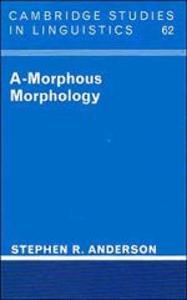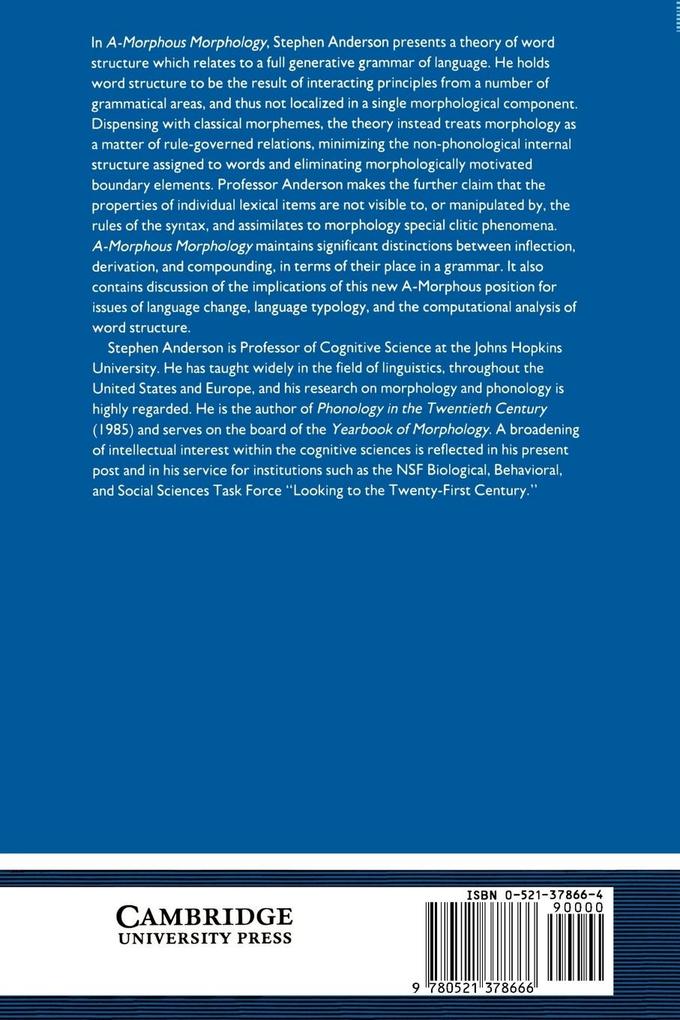
Zustellung: Sa, 28.06. - Mi, 02.07.
Versand in 6 Tagen
VersandkostenfreiBestellen & in Filiale abholen:
A-Morphous Morphology presents a new theory of the structure of words, as it relates to a full generative grammar of language. It rejects the notion that complex words are built up by concatenating simple minimal signs or morphemes, and proposes instead that word structure is described by a system of rule-governed relations between one word and another. In his book, eminent linguist Stephen Anderson offers a discussion of the implications of his own original position for issues in language change, language typology and the computational analysis of word structure.
Inhaltsverzeichnis
Acknowledgments; Introduction; 1. The study of word structure; 2. Why have a morphology at all?; 3. Is morphology really about morphemes?; 4. The interaction of morphology and syntax; 5. The theory of inflection; 6. Some complex inflectional systems; 7. Morphology in the lexicon: derivation; 8. Clitics are phrasal affixes; 9. The relation of morphology to phonology; 10. How much structure do words have?; 11. Composites: words with internal structure; 12. Morphology and the typology of languages; 13. Morphological change; 14. Morphology as a computational problem; References; Index.
Produktdetails
Erscheinungsdatum
19. Juli 1992
Sprache
englisch
Seitenanzahl
452
Autor/Autorin
Stephen R. Anderson
Verlag/Hersteller
Produktart
kartoniert
Gewicht
729 g
Größe (L/B/H)
229/152/26 mm
ISBN
9780521378666
Entdecken Sie mehr
Pressestimmen
."..the discussions are well conducted: the line of argument and its relationships with the data on the one hand--which come from a variety of languages--and theoretical constructions on the other is clear and leaves little unassumed. ... Any linguist dealing with words should read this book: it gives a good idea of the state morphology has arrived at in the Chomskyan framework and the problems it will have to address, and it is more than likely to stimulate anyone's reflection on the fundamentals of that discipline." Canadian Journal of Linguistics
Bewertungen
0 Bewertungen
Es wurden noch keine Bewertungen abgegeben. Schreiben Sie die erste Bewertung zu "A-Morphous Morphology" und helfen Sie damit anderen bei der Kaufentscheidung.










